 Search by Keyword
|
“A TASTE OF HONEY”
(Ric Marlow – Bobby Scott)
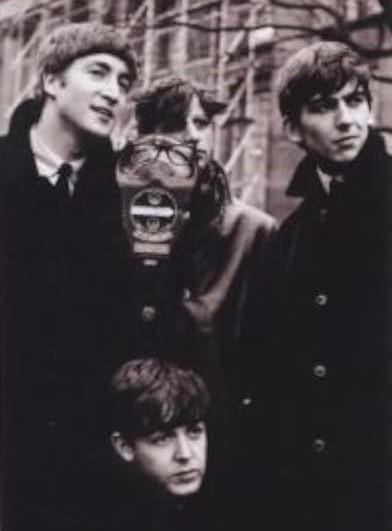 There were a lot of “beat” groups that were competing for prominence in Liverpool back in the later '50s and '60s. Each one of them struggled to edge out the others with a uniqueness that they hoped would set them apart and get them noticed. Any gimmick that might get them a bit more attention or increase their bookings would be considered. There were a lot of “beat” groups that were competing for prominence in Liverpool back in the later '50s and '60s. Each one of them struggled to edge out the others with a uniqueness that they hoped would set them apart and get them noticed. Any gimmick that might get them a bit more attention or increase their bookings would be considered.
The one undeniable fact about The Beatles is they had a love of music; not just rock and roll, but all varieties of music. Paul McCartney in particular had a fondness for ballads, even standards from back in his father’s era. As he once explained, they “weren’t ashamed of those leanings” and would incorporate these ballads into their set list so they “could be a bit more varied.”
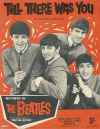 This resulted in the group getting more bookings, since many gigs required them to perform “ballady” material so as to entertain more adult audiences that were quite anti-rock-n-roll, such as in The Beatles' early Hamburg days. Performing crooners like “Till There Was You,” “Ain’t She Sweet” and “My Funny Valentine” was not beneath them, in fact the band quite enjoyed performing them. These became the late-night cabaret numbers that showed that they weren’t just another rock-n-roll band. They were something special. This resulted in the group getting more bookings, since many gigs required them to perform “ballady” material so as to entertain more adult audiences that were quite anti-rock-n-roll, such as in The Beatles' early Hamburg days. Performing crooners like “Till There Was You,” “Ain’t She Sweet” and “My Funny Valentine” was not beneath them, in fact the band quite enjoyed performing them. These became the late-night cabaret numbers that showed that they weren’t just another rock-n-roll band. They were something special.
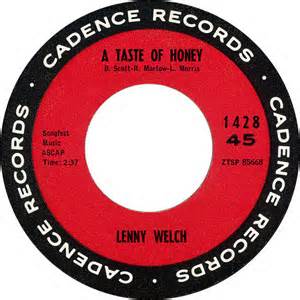 With this in mind, Paul McCartney would sing these ballads to add a bit of "sophistication" to their stage act. Among the material they found to fill this need was the ballad “A Taste Of Honey,” this song being recently recorded and released by Lenny Welch in 1962. In order to add this bit of "sophistication" to their first album, George Martin took some time to make this "adult" sounding song fit into their "teeny-bopper" Beatles LP with the goal of displaying their musical abilities, hoping that this may impress more than just the teenagers who made up their audience at the time. With this in mind, Paul McCartney would sing these ballads to add a bit of "sophistication" to their stage act. Among the material they found to fill this need was the ballad “A Taste Of Honey,” this song being recently recorded and released by Lenny Welch in 1962. In order to add this bit of "sophistication" to their first album, George Martin took some time to make this "adult" sounding song fit into their "teeny-bopper" Beatles LP with the goal of displaying their musical abilities, hoping that this may impress more than just the teenagers who made up their audience at the time.
Songwriting History
 The song “A Taste Of Honey” has actually been considered as "one of the most commercially successful songs in the history of the music and recording industry." This opinion has been reached, no doubt, because it has been recorded by upwards of 250 artists internationally, which includes its songwriter Ric Marlow, Billy Dee Williams, Tony Bennett, Johnny Mathis, The Ventures, Mr. Acker Bilk and of course The Beatles. The song “A Taste Of Honey” has actually been considered as "one of the most commercially successful songs in the history of the music and recording industry." This opinion has been reached, no doubt, because it has been recorded by upwards of 250 artists internationally, which includes its songwriter Ric Marlow, Billy Dee Williams, Tony Bennett, Johnny Mathis, The Ventures, Mr. Acker Bilk and of course The Beatles.
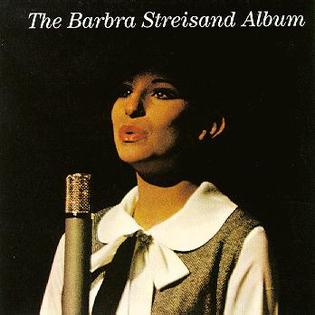 Barbara Streisand's version, as recorded in January of 1963, was included on her debut album "The Barbara Streisand Album," this winning a Grammy for "Album Of The Year" in 1963. The song's biggest success has been as an instrumental with recordings by The Victor Feldman Quartet, Martin Denny and the most known hit version by Herb Alpert's Tijuana Brass. Herb Alpert’s 1965 rendition rose to #7 on the US Billboard Hot 100 and won the Grammy Award for “Record Of The Year.” This song had also previously won a Grammy Award for “Best Instrumental Theme” in 1962. Barbara Streisand's version, as recorded in January of 1963, was included on her debut album "The Barbara Streisand Album," this winning a Grammy for "Album Of The Year" in 1963. The song's biggest success has been as an instrumental with recordings by The Victor Feldman Quartet, Martin Denny and the most known hit version by Herb Alpert's Tijuana Brass. Herb Alpert’s 1965 rendition rose to #7 on the US Billboard Hot 100 and won the Grammy Award for “Record Of The Year.” This song had also previously won a Grammy Award for “Best Instrumental Theme” in 1962.
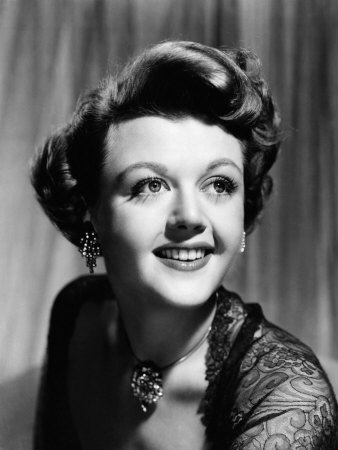 The song was inspired by the 1958 English play of the same name, which enjoyed immense success as it hit Broadway in 1960 (starring Angela Lansbury and Billy Dee Williams) and as an award winning movie in 1961. The controversial subject matter, which included single motherhood, sexuality, race and even homosexuality, reflected the social changes in attitude that were taking place in Britain during the late '50s and early '60s. The song was inspired by the 1958 English play of the same name, which enjoyed immense success as it hit Broadway in 1960 (starring Angela Lansbury and Billy Dee Williams) and as an award winning movie in 1961. The controversial subject matter, which included single motherhood, sexuality, race and even homosexuality, reflected the social changes in attitude that were taking place in Britain during the late '50s and early '60s.
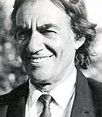 Composer Ric Marlow was actually known as more than a songwriter. He had a long-standing TV acting career, appearing in as many as 75 shows throughout his lifetime. His first appearance was in the 1959 TV program “The Lawless Years” and then he continued throughout the '60s in shows like “Ripcord,” “Dante,” “Sea Hunt” and even “Bonanza.” His career in acting continued into the '70s, appearing numerous times on “Hawaii Five-0” and then on “Magnum PI” as late as 1984. Composer Ric Marlow was actually known as more than a songwriter. He had a long-standing TV acting career, appearing in as many as 75 shows throughout his lifetime. His first appearance was in the 1959 TV program “The Lawless Years” and then he continued throughout the '60s in shows like “Ripcord,” “Dante,” “Sea Hunt” and even “Bonanza.” His career in acting continued into the '70s, appearing numerous times on “Hawaii Five-0” and then on “Magnum PI” as late as 1984.
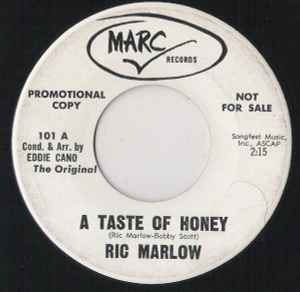 Ric Marlow had also decided to pursue a recording career, releasing his own rendition of "A Taste Of Honey" in 1962, as mentioned above. He continued persuing a singing career, appearing throughout the years in Las Vegas, New York, Florida, Hollywood and Palm Springs, California where he died in 2017 at 91 years old. The success of “A Taste Of Honey,” with its 150 million copies sold worldwide, was his major claim to fame. Ric Marlow had also decided to pursue a recording career, releasing his own rendition of "A Taste Of Honey" in 1962, as mentioned above. He continued persuing a singing career, appearing throughout the years in Las Vegas, New York, Florida, Hollywood and Palm Springs, California where he died in 2017 at 91 years old. The success of “A Taste Of Honey,” with its 150 million copies sold worldwide, was his major claim to fame.
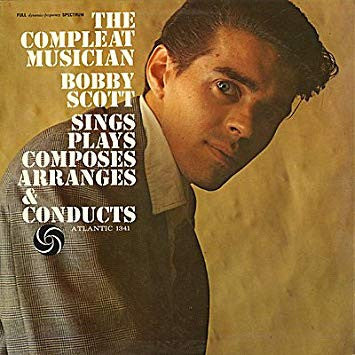 Co-composer Bobby Scott was a very accomplished jazz musician who studied at the LaFollette School Of Music in New York in 1945. He was an accomplished pianist and vocalist, as well as mastering the vibes, clarinet, drums, accordion, cello and bass. Bobby Scott turned professional as early as age 11, and was working with Louie Prima by the age of 15. By the mid '50s he enjoyed the priviledge of working with Gene Krupa and Tony Scott and performing at various prestigious jazz festivals. Co-composer Bobby Scott was a very accomplished jazz musician who studied at the LaFollette School Of Music in New York in 1945. He was an accomplished pianist and vocalist, as well as mastering the vibes, clarinet, drums, accordion, cello and bass. Bobby Scott turned professional as early as age 11, and was working with Louie Prima by the age of 15. By the mid '50s he enjoyed the priviledge of working with Gene Krupa and Tony Scott and performing at various prestigious jazz festivals.
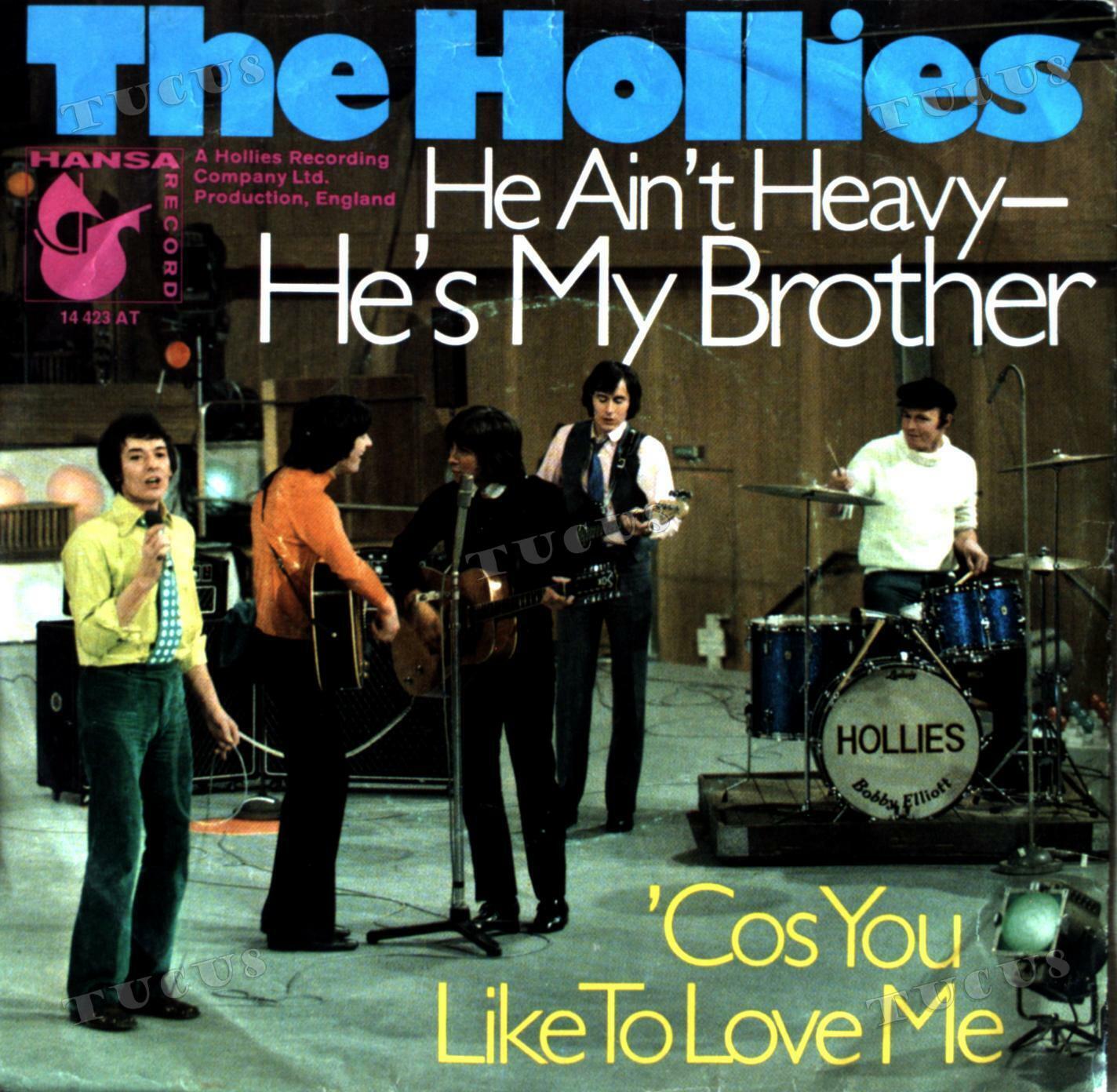 Bobby Scott decided to stop performing in the late '50s in order to concentrate on writing and teaching musical theory and harmony while he continued his studies in music. It was during this period that Bobby Scott co-authored the song “A Taste Of Honey” with Ric Marlow as well as releasing two LPs in 1960, also scoring at #13 hit in 1956 on the US Billboard Hot 100 with the million-selling hit "Chain Gang." He also co-wrote the ever popular song “He Ain’t Heavy, He’s My Brother” with fellow writer Bobby Russell (who was then dying of cancer), which was taken to the #7 spot on the US Billboard Hot 100 in 1970 by another British Invasion group, The Hollies, this also being made popular by Neil Diamond, Cher, Olivia Newton John, The Osmonds, Bill Medley and many other artists throughout the years. Bobby Scott decided to stop performing in the late '50s in order to concentrate on writing and teaching musical theory and harmony while he continued his studies in music. It was during this period that Bobby Scott co-authored the song “A Taste Of Honey” with Ric Marlow as well as releasing two LPs in 1960, also scoring at #13 hit in 1956 on the US Billboard Hot 100 with the million-selling hit "Chain Gang." He also co-wrote the ever popular song “He Ain’t Heavy, He’s My Brother” with fellow writer Bobby Russell (who was then dying of cancer), which was taken to the #7 spot on the US Billboard Hot 100 in 1970 by another British Invasion group, The Hollies, this also being made popular by Neil Diamond, Cher, Olivia Newton John, The Osmonds, Bill Medley and many other artists throughout the years.
 Bobby Scott also dabbled in writing musical scores for movies, such as “Slaves” (1969), “Joe” (1970) and “Who Says I Can’t Ride A Rainbow” (1971). He gradually returned to performing and recording and, in 1990, released the Nat “King” Cole tribute album "For Sentimental Reasons." He unfortunately died of lung cancer on November 5th, 1990. His legacy in music is felt to this day, especially in regards with his two most famous songs, “A Taste Of Honey” and “He Ain’t Heavy, He’s My Brother,” both of these appearing in many movies and television commercials throughout the '80s, '90s and until today. Bobby Scott also dabbled in writing musical scores for movies, such as “Slaves” (1969), “Joe” (1970) and “Who Says I Can’t Ride A Rainbow” (1971). He gradually returned to performing and recording and, in 1990, released the Nat “King” Cole tribute album "For Sentimental Reasons." He unfortunately died of lung cancer on November 5th, 1990. His legacy in music is felt to this day, especially in regards with his two most famous songs, “A Taste Of Honey” and “He Ain’t Heavy, He’s My Brother,” both of these appearing in many movies and television commercials throughout the '80s, '90s and until today.
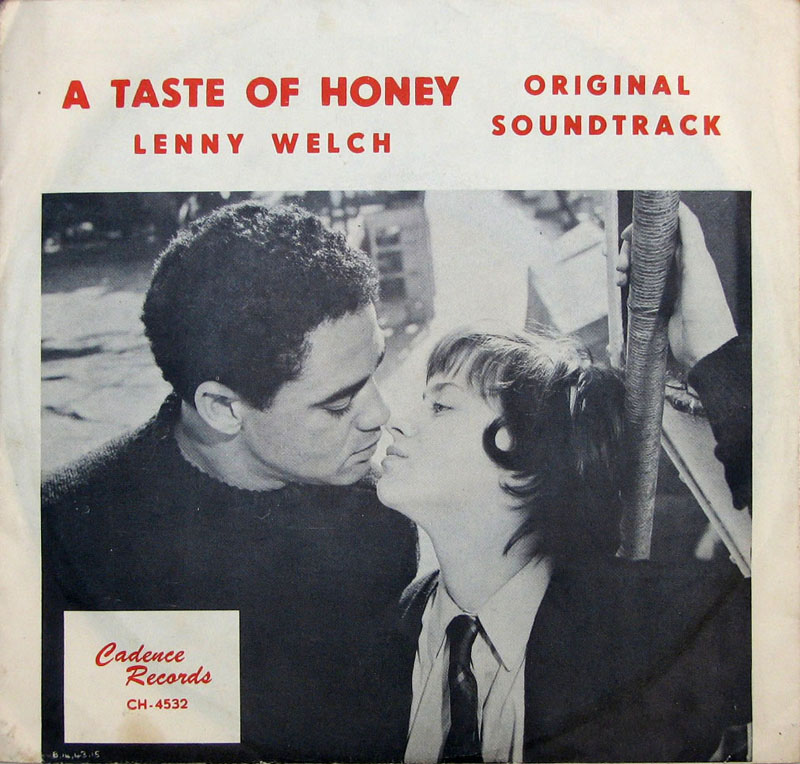 Of the many renditions of “A Taste Of Honey” that have been recorded, the version released by Lenny Welch on September 17th, 1962 became the most influential with The Beatles. They patterned their arrangement of the song after this recording which, although failing to make a dent on either the British charts or the American Billboard Hot 100, made a slightly bigger impact in Britain. They did alter the lyrics slightly from this Lenny Welch recording, "a taste much sweeter than wine" now being altered to "tasting much sweeter than wine." Of the many renditions of “A Taste Of Honey” that have been recorded, the version released by Lenny Welch on September 17th, 1962 became the most influential with The Beatles. They patterned their arrangement of the song after this recording which, although failing to make a dent on either the British charts or the American Billboard Hot 100, made a slightly bigger impact in Britain. They did alter the lyrics slightly from this Lenny Welch recording, "a taste much sweeter than wine" now being altered to "tasting much sweeter than wine."
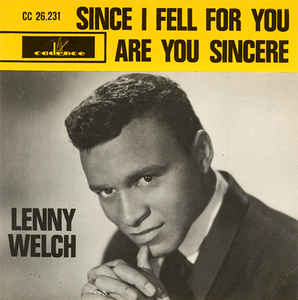 Lenny Welch started out his recording career in 1958 on Decca Records (the very same label that was the first to release a Beatles single in the US: “My Bonnie” by “Tony Sheridan and The Beat Brothers” in 1962). After two dismal selling singles on Decca, he met Archie Bleyer, owner of Cadence Records who acheived great success with The Everly Brothers among other artists. Archie Bleyer signed up Lenny Welch to his label and after they released a few modest selling singles, including “A Taste Of Honey,” he hit #4 on the Billboard Hot 100 with “Since I Fell For You” in January of 1964, just before Beatlemania took over the American charts. Cadence Records then re-released his version of “Ebb Tide,” which scored a modest follow-up hit in April of 1964 (#25 on Billboard) and it seemed that Lenny Welch was on his way to becoming another Johnny Mathis-style crooner. Lenny Welch started out his recording career in 1958 on Decca Records (the very same label that was the first to release a Beatles single in the US: “My Bonnie” by “Tony Sheridan and The Beat Brothers” in 1962). After two dismal selling singles on Decca, he met Archie Bleyer, owner of Cadence Records who acheived great success with The Everly Brothers among other artists. Archie Bleyer signed up Lenny Welch to his label and after they released a few modest selling singles, including “A Taste Of Honey,” he hit #4 on the Billboard Hot 100 with “Since I Fell For You” in January of 1964, just before Beatlemania took over the American charts. Cadence Records then re-released his version of “Ebb Tide,” which scored a modest follow-up hit in April of 1964 (#25 on Billboard) and it seemed that Lenny Welch was on his way to becoming another Johnny Mathis-style crooner.
 Two major setbacks to his recording career then happened. Since The Everly Brothers then signed to the new Warner Bros label, Archie Bleyer decided to fold up Cadence Records in September of 1964. The other setback was when Lenny Welch joined the National Guard Reserves in lieu of being drafted. Although he obtained a new recording deal with Kapp Records in 1965, little chart success occurred due to his once-a-week military commitment preventing him from extensive touring. Two major setbacks to his recording career then happened. Since The Everly Brothers then signed to the new Warner Bros label, Archie Bleyer decided to fold up Cadence Records in September of 1964. The other setback was when Lenny Welch joined the National Guard Reserves in lieu of being drafted. Although he obtained a new recording deal with Kapp Records in 1965, little chart success occurred due to his once-a-week military commitment preventing him from extensive touring.
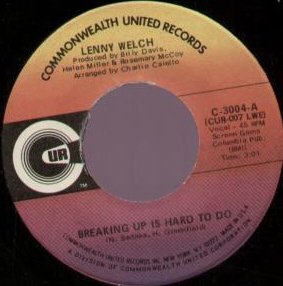 After his service time was complete, he struggled to continue his music career, but mostly in vain. Lenny Welch's only return to the Billboard Top 40 was his slow-ballad version of Neil Sedaka’s “Breaking Up Is Hard To Do,” which peaked at #34 in 1970 on the Commonwealth United label. Neil Sedaka liked this version enough to record his own ballad version of the song 5 1/2 years later, bringing it to #8 on the Billboard Hot 100. After his service time was complete, he struggled to continue his music career, but mostly in vain. Lenny Welch's only return to the Billboard Top 40 was his slow-ballad version of Neil Sedaka’s “Breaking Up Is Hard To Do,” which peaked at #34 in 1970 on the Commonwealth United label. Neil Sedaka liked this version enough to record his own ballad version of the song 5 1/2 years later, bringing it to #8 on the Billboard Hot 100.
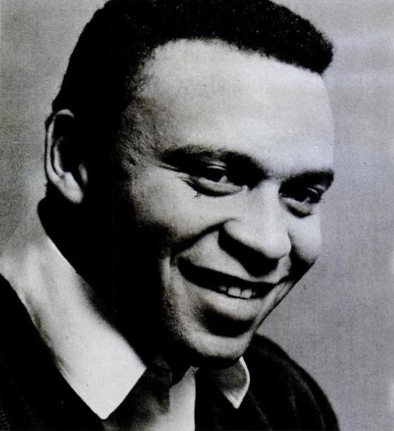 Lenny Welch struggled for a little bit with his own record label, but after it failed, resorted to leaving the music business and driving a cab in New York City to pay back those who invested in his failed label. He eventually found himself to be in demand once again and he began doing oldies shows and residencies on cruise ships, later joining The Royal All-Stars, which was a "supergroup" featuring vocalists from various popular groups of long ago. They became a mainstay in the "doo wop" circuits, touring regularly for many years until his retirement in 2020 because of Covid-19 shutdowns. Along with his royalty payments for “Since I Fell For You,” Lenny Welch continued to live his original dream of being a performer in the music business. He unfortunately passed away following a long illness in Kissimmee, Florida on April 8th, 2025. Lenny Welch struggled for a little bit with his own record label, but after it failed, resorted to leaving the music business and driving a cab in New York City to pay back those who invested in his failed label. He eventually found himself to be in demand once again and he began doing oldies shows and residencies on cruise ships, later joining The Royal All-Stars, which was a "supergroup" featuring vocalists from various popular groups of long ago. They became a mainstay in the "doo wop" circuits, touring regularly for many years until his retirement in 2020 because of Covid-19 shutdowns. Along with his royalty payments for “Since I Fell For You,” Lenny Welch continued to live his original dream of being a performer in the music business. He unfortunately passed away following a long illness in Kissimmee, Florida on April 8th, 2025.
Recording History
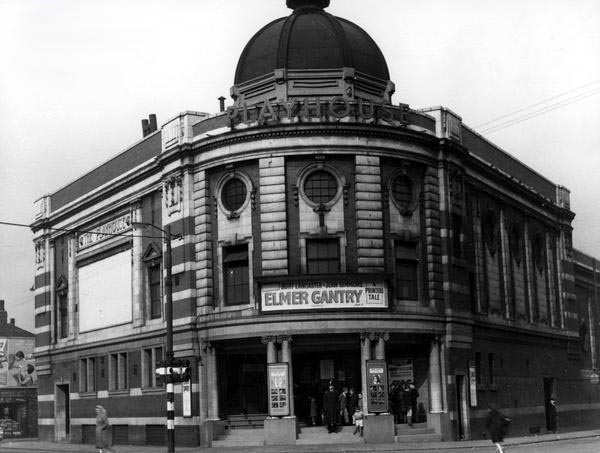 The first time The Beatles recorded "A Taste Of Honey" was actually for BBC Radio, this occurring almost five months before their official EMI version was released on their first UK album “Please Please Me.” This recording happened on October 25th, 1962 at Playhouse Theatre in Manchester between 8 and 8:45 pm for the BBC radio program “Here We Go,” which aired on October 26th of that year between 5 and 5:29 pm. The first time The Beatles recorded "A Taste Of Honey" was actually for BBC Radio, this occurring almost five months before their official EMI version was released on their first UK album “Please Please Me.” This recording happened on October 25th, 1962 at Playhouse Theatre in Manchester between 8 and 8:45 pm for the BBC radio program “Here We Go,” which aired on October 26th of that year between 5 and 5:29 pm.
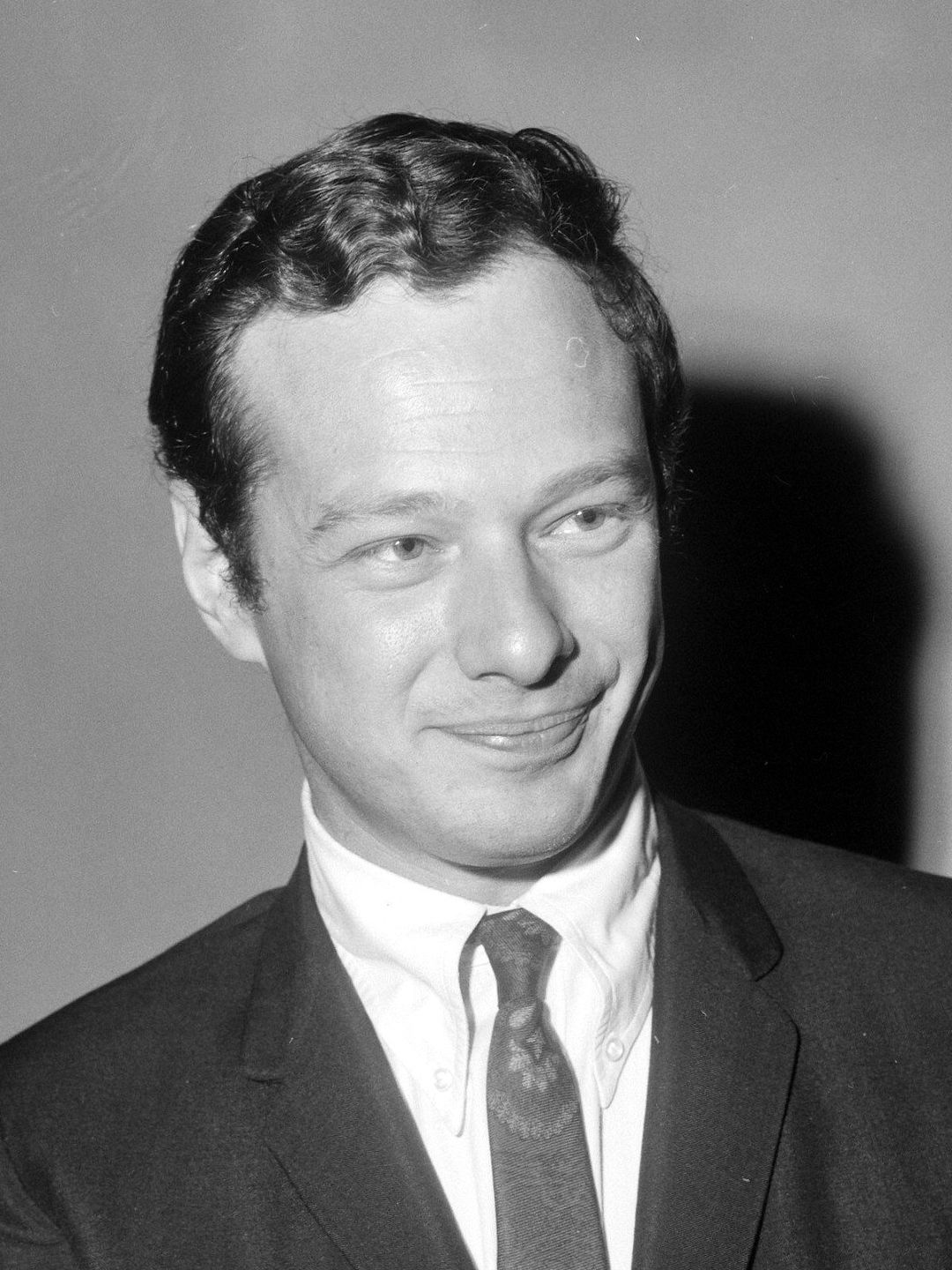 The Beatles' official EMI recording of this song was also part of the 12 1/2 hour recording session that occurred on February 11th, 1963 to complete their first album. As can be noted by the order of the songs recorded on this day, the emphasis was primarily on recording original material at the insistence of Brian Epstein and the band. The only exception to this rule was the recording of "A Taste Of Honey," which was the only cover song recorded before the evening session began. It has been suggested by some that this song's inclusion at this recording session was due to its popularity in Britain by the instrumental version recorded by Mr. Acker Bilk at this time. The Beatles' official EMI recording of this song was also part of the 12 1/2 hour recording session that occurred on February 11th, 1963 to complete their first album. As can be noted by the order of the songs recorded on this day, the emphasis was primarily on recording original material at the insistence of Brian Epstein and the band. The only exception to this rule was the recording of "A Taste Of Honey," which was the only cover song recorded before the evening session began. It has been suggested by some that this song's inclusion at this recording session was due to its popularity in Britain by the instrumental version recorded by Mr. Acker Bilk at this time.
 When their afternoon session started in EMI Studio Two at 2:30 pm, “A Taste Of Honey” was first on the schedule. Five complete takes were recorded with all of The Beatles playing their usual instruments live along with all lead and backing vocals. For the time being, "take five" was deemed the best. When their afternoon session started in EMI Studio Two at 2:30 pm, “A Taste Of Honey” was first on the schedule. Five complete takes were recorded with all of The Beatles playing their usual instruments live along with all lead and backing vocals. For the time being, "take five" was deemed the best.
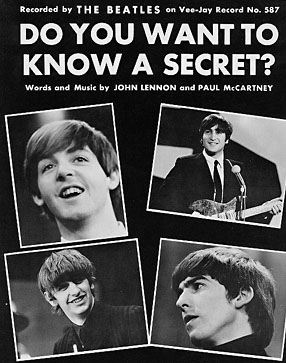 After the next song, “Do You Want To Know A Secret,” was deemed as complete, attentions focused again on “A Taste Of Honey.” At approximately 3:45 pm, as the two-track tape was recorded onto another tape, McCartney recorded another vocal during the refrains of the song to create a double-tracking effect, the only double-tracking present on the resulting "Please Please Me" album. This effect was accomplished by McCartney superimposing an identical performance on top of another, creating a fuller sound because of not being able to perform the second performance in perfect synchronization with the first performance. After the next song, “Do You Want To Know A Secret,” was deemed as complete, attentions focused again on “A Taste Of Honey.” At approximately 3:45 pm, as the two-track tape was recorded onto another tape, McCartney recorded another vocal during the refrains of the song to create a double-tracking effect, the only double-tracking present on the resulting "Please Please Me" album. This effect was accomplished by McCartney superimposing an identical performance on top of another, creating a fuller sound because of not being able to perform the second performance in perfect synchronization with the first performance.
 Paul was instructed by George Martin to “double-track” his vocals in two places, this being each time the bridge of the song appeared. The first bridge overdub became "take six" and the second bridge made it "take seven," which then was considered the final take, thus completing the recording of "A Taste Of Honey." This technique, which was new to The Beatles at this point, was used at the band’s insistence on the majority of the material they recorded within the next two years (and sparingly thereafter as well). Paul was instructed by George Martin to “double-track” his vocals in two places, this being each time the bridge of the song appeared. The first bridge overdub became "take six" and the second bridge made it "take seven," which then was considered the final take, thus completing the recording of "A Taste Of Honey." This technique, which was new to The Beatles at this point, was used at the band’s insistence on the majority of the material they recorded within the next two years (and sparingly thereafter as well).
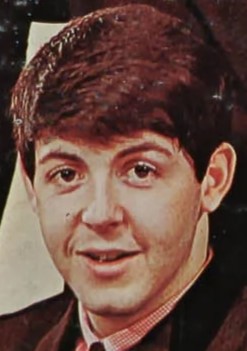 No mixes of this song were created on this day. Both the mono and stereo mixes of the song were done during the mastering session for the album, which occurred on February 25th, 1963. Both mixes were created using "take seven," this take including both of Paul's “double-tracked” vocals. No mixes of this song were created on this day. Both the mono and stereo mixes of the song were done during the mastering session for the album, which occurred on February 25th, 1963. Both mixes were created using "take seven," this take including both of Paul's “double-tracked” vocals.
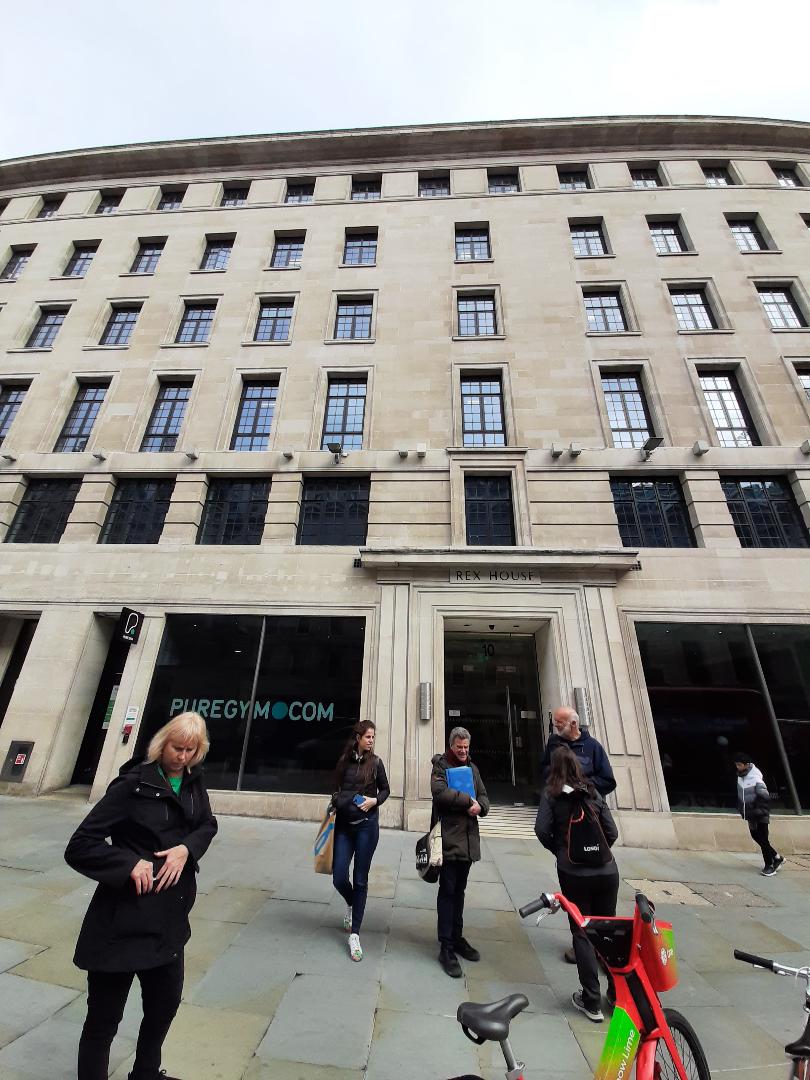 Seven more recordings of "A Taste Of Honey" occurred in 1963, the first happening on April 1st, shortly after the "Please Please Me" album was released in the UK, at Studio One at BBC Piccadilly Studios in London between 6:30 and 10:30 pm. This was recorded for the BBC radio show “Side By Side” which aired on May 13th between 5 and 5:29 pm. Secondly, on April 4th, a surprisingly clear private recording of this song was made by John Bloomfield, a fifteen-year-old student in attendance at Stowe School's Roxburgh Hall in Stowe where The Beatles performed 22 songs between 6:30 to 7:30 pm, this being clearly preserved on tape along with requests for this song from the students. Seven more recordings of "A Taste Of Honey" occurred in 1963, the first happening on April 1st, shortly after the "Please Please Me" album was released in the UK, at Studio One at BBC Piccadilly Studios in London between 6:30 and 10:30 pm. This was recorded for the BBC radio show “Side By Side” which aired on May 13th between 5 and 5:29 pm. Secondly, on April 4th, a surprisingly clear private recording of this song was made by John Bloomfield, a fifteen-year-old student in attendance at Stowe School's Roxburgh Hall in Stowe where The Beatles performed 22 songs between 6:30 to 7:30 pm, this being clearly preserved on tape along with requests for this song from the students.
.jpg) June 1st saw the next recording of the song at BBC Paris Studio in London between 9:30 am and 1:30 pm for the third edition of their radio series “Pop Go The Beatles” which was produced by Terry Henebery and aired on June 18th between 5 and 5:29 pm. Then on June 19th of that year, they recorded the song again at The Playhouse Theatre in London before a screaming audience between 8:45 and 9:45 pm. This song was produced by Ron Belchier for the BBC radio program “Easy Beat,” which was broadcast on June 23rd between 10:31 and 11:30 am. June 1st saw the next recording of the song at BBC Paris Studio in London between 9:30 am and 1:30 pm for the third edition of their radio series “Pop Go The Beatles” which was produced by Terry Henebery and aired on June 18th between 5 and 5:29 pm. Then on June 19th of that year, they recorded the song again at The Playhouse Theatre in London before a screaming audience between 8:45 and 9:45 pm. This song was produced by Ron Belchier for the BBC radio program “Easy Beat,” which was broadcast on June 23rd between 10:31 and 11:30 am.
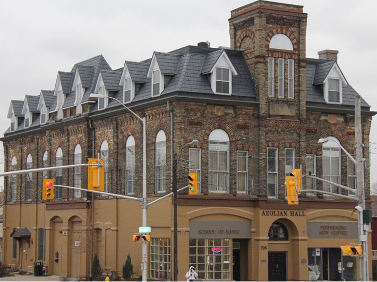 Then on July 3rd of that year, The Beatles recorded the song at Playhouse Theatre in Manchester between 8 and 9 pm in front of a live audience, this being produced by Geoff Lawrence and broadcast on BBC's "The Beat Show" the following afternoon between 1 and 1:30 pm. This was then followed by the July 10th recording of the song in Studio Two of Aeolian Hall in London between 10:30 am to 1:30 pm for the sixth edition of their radio series “Pop Go The Beatles,” which was produced by Terry Henebery and broadcast on July 23rd between 5 and 5:29 pm. This performance of the song is the one that appears on the "Live At The BBC" album. Then on July 3rd of that year, The Beatles recorded the song at Playhouse Theatre in Manchester between 8 and 9 pm in front of a live audience, this being produced by Geoff Lawrence and broadcast on BBC's "The Beat Show" the following afternoon between 1 and 1:30 pm. This was then followed by the July 10th recording of the song in Studio Two of Aeolian Hall in London between 10:30 am to 1:30 pm for the sixth edition of their radio series “Pop Go The Beatles,” which was produced by Terry Henebery and broadcast on July 23rd between 5 and 5:29 pm. This performance of the song is the one that appears on the "Live At The BBC" album.
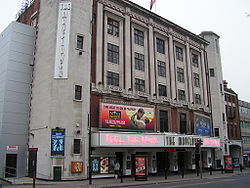 On August 21st, 1963, during their six night residency in Bournemouth, Hants, England, the chief technician at Gaumont Cinema recorded the group's full performance on his small reel-to-reel tape recorder in order to test out the venue's sound system. The fifth song on their set list that day was "A Taste Of Honey." This 25-minute reel of tape was sold by Christie's auction house in 1998 for 25,300 pounds and has not yet been made available commercially. Their final BBC recording of "A Taste Of Honey" was on September 3rd in Studio Two of Aeolian Hall in London between 5 and 7:30 pm for their thirteenth edition of "Pop Goes The Beatles," this being produced by Terry Henebery and broadcast on September 10th between 5 and 5:29 pm. On August 21st, 1963, during their six night residency in Bournemouth, Hants, England, the chief technician at Gaumont Cinema recorded the group's full performance on his small reel-to-reel tape recorder in order to test out the venue's sound system. The fifth song on their set list that day was "A Taste Of Honey." This 25-minute reel of tape was sold by Christie's auction house in 1998 for 25,300 pounds and has not yet been made available commercially. Their final BBC recording of "A Taste Of Honey" was on September 3rd in Studio Two of Aeolian Hall in London between 5 and 7:30 pm for their thirteenth edition of "Pop Goes The Beatles," this being produced by Terry Henebery and broadcast on September 10th between 5 and 5:29 pm.
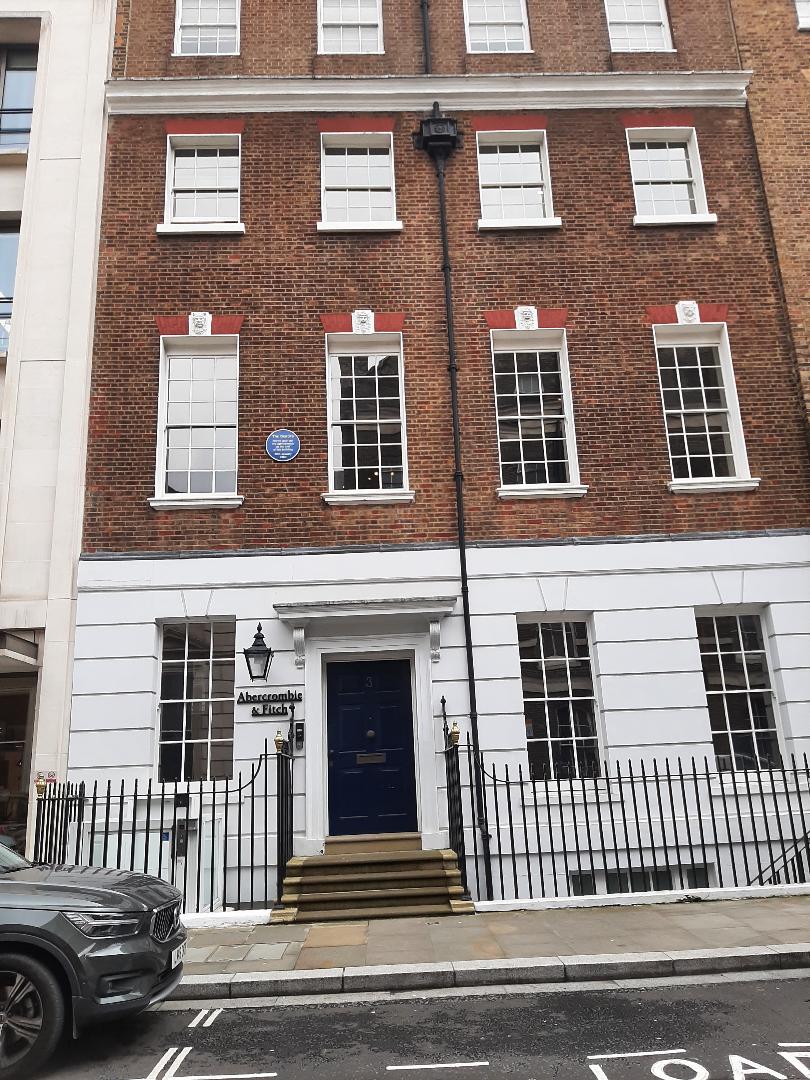 One other quick impromptu Beatles rendition of "A Taste Of Honey" occurred later on January 22nd, 1969 at Apple Studios during rehearsals and recording sessions for what would eventually be their "Let It Be" album and movie. Keyboardist Billy Preston, who had met The Beatles in Hamburg, Germany in 1962 when he was playing with Little Richard, dropped by Apple Studios on this day for a visit. Remembering that Billy Preston would often attend a Beatles performance back in Hamburg and ask them to play "A Taste Of Honey," George led John and Paul through a quick runthrough of the song just for laughs, this being witnessed in Peter Jackson's "Get Back" series. As history reveals, Billy Preston was asked by John on this day to play with them for the "Let It Be" project, an offer he readily accepted. One other quick impromptu Beatles rendition of "A Taste Of Honey" occurred later on January 22nd, 1969 at Apple Studios during rehearsals and recording sessions for what would eventually be their "Let It Be" album and movie. Keyboardist Billy Preston, who had met The Beatles in Hamburg, Germany in 1962 when he was playing with Little Richard, dropped by Apple Studios on this day for a visit. Remembering that Billy Preston would often attend a Beatles performance back in Hamburg and ask them to play "A Taste Of Honey," George led John and Paul through a quick runthrough of the song just for laughs, this being witnessed in Peter Jackson's "Get Back" series. As history reveals, Billy Preston was asked by John on this day to play with them for the "Let It Be" project, an offer he readily accepted.
Song Structure and Style
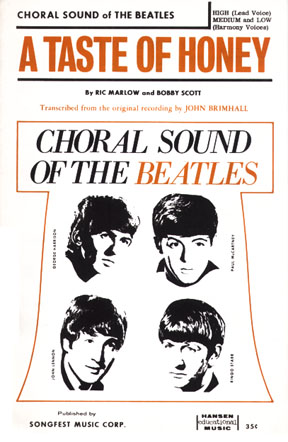 The structure of this song is a variation of what was used for the majority of the songs on the album. It is similar in that it consists of only verses and bridges with no chorus, but is different in that it only contains two verses that are alternated with two identical bridges. The structure here is therefore 'verse/ bridge/ verse/ bridge' (or abab) with a bridge ending the song. Another distinctive feature which makes it dissimilar to the rest of the album is the change in time signature, with both verses being in 3/4 time (or “waltz” time) while most of the bars of each bridge are in standard 4/4 time. The structure of this song is a variation of what was used for the majority of the songs on the album. It is similar in that it consists of only verses and bridges with no chorus, but is different in that it only contains two verses that are alternated with two identical bridges. The structure here is therefore 'verse/ bridge/ verse/ bridge' (or abab) with a bridge ending the song. Another distinctive feature which makes it dissimilar to the rest of the album is the change in time signature, with both verses being in 3/4 time (or “waltz” time) while most of the bars of each bridge are in standard 4/4 time.
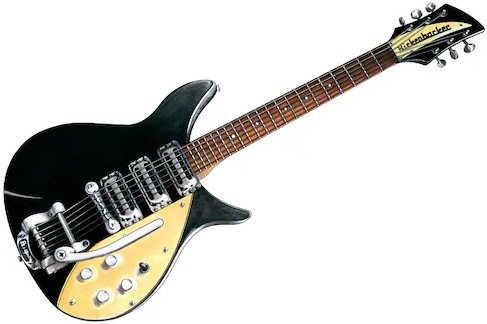 Just like “Do You Want To Know A Secret” that it follows on the album, "A Taste Of Honey" begins with a dramatic introduction before the first verse is heard. It similarly begins with strummed guitar chording only whenever the chord changes, but is dissimilar in that it includes a three part harmony part sung by Paul, John and George as well as bass notes from Paul. The introduction actually lasts a complete eight bars, all in 3/4 time. The second half of the introduction contains the full band instrumentation with three part “doo-doot-n-doo” harmonies from the boys. Just like “Do You Want To Know A Secret” that it follows on the album, "A Taste Of Honey" begins with a dramatic introduction before the first verse is heard. It similarly begins with strummed guitar chording only whenever the chord changes, but is dissimilar in that it includes a three part harmony part sung by Paul, John and George as well as bass notes from Paul. The introduction actually lasts a complete eight bars, all in 3/4 time. The second half of the introduction contains the full band instrumentation with three part “doo-doot-n-doo” harmonies from the boys.
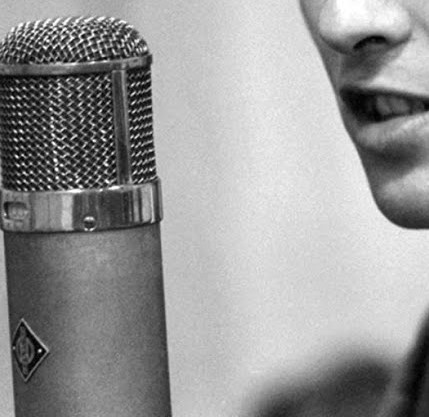 Each verse is 16 bars in length with a melody line and chord pattern that is distinctively melodic. The melody line ascends dramatically to the signature title of the song which alerts John and George to answer the phrase creating another three part harmony. The 10 bar bridge then transitions into 4/4 time for the first six bars while Paul sings his “double-tracked” vocal line with a bit of added reverb. When his vocal line is finished, the rest of the bridge returns to the familiar 3/4 time with three part harmonies, which is actually identical to the second half of the introduction. Each verse is 16 bars in length with a melody line and chord pattern that is distinctively melodic. The melody line ascends dramatically to the signature title of the song which alerts John and George to answer the phrase creating another three part harmony. The 10 bar bridge then transitions into 4/4 time for the first six bars while Paul sings his “double-tracked” vocal line with a bit of added reverb. When his vocal line is finished, the rest of the bridge returns to the familiar 3/4 time with three part harmonies, which is actually identical to the second half of the introduction.
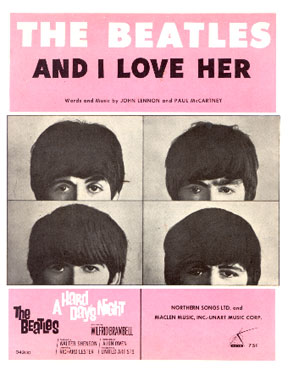 After a second verse follows the same pattern as the first, a second identical bridge appears but changes into two dramatic breaks that highlight a question-and-answer exchange between Paul’s lead vocal and John and George's harmonies. This distinctive hook is the one similar characteristic between The Beatles vocal rendition and the hugely popular Herb Alpert instrumental version from 1965. Paul then puts in an extended high note to mark the official climax to The Beatles' version, which suddenly shifts back to 3/4 time for the final four bars. An interesting touch that Paul capitalized on with his song “And I Love Her” a year later is setting apart the minor chords of the song with a final major chord which creates a satisfying note of finality. After a second verse follows the same pattern as the first, a second identical bridge appears but changes into two dramatic breaks that highlight a question-and-answer exchange between Paul’s lead vocal and John and George's harmonies. This distinctive hook is the one similar characteristic between The Beatles vocal rendition and the hugely popular Herb Alpert instrumental version from 1965. Paul then puts in an extended high note to mark the official climax to The Beatles' version, which suddenly shifts back to 3/4 time for the final four bars. An interesting touch that Paul capitalized on with his song “And I Love Her” a year later is setting apart the minor chords of the song with a final major chord which creates a satisfying note of finality.
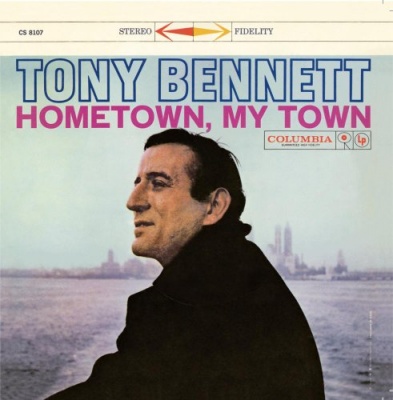 The lyrics have a simple sentiment of a long distance reminiscence of the first kiss from a true love along with the desire of returning soon. The poetic way of expressing these desires brought out in Ric Marlow’s lyrics, though, are consistent with the stature that the song has transcended to as time has gone by. It seems quite ironic that the most known version of the song is instrumental, meaning that most people are totally oblivious to these amazing lyrics. Amazing, that is, in the context of the time and style of music it was intended for. Also ironic is the fact that probably the second most popular rendition is The Beatles vocal version, which sounds “schmaltzy” in comparison to the rock-and-roll style that they are known for. That being said, Ric Marlow’s lyrics are probably best heard in the hands of Tony Bennett. The lyrics have a simple sentiment of a long distance reminiscence of the first kiss from a true love along with the desire of returning soon. The poetic way of expressing these desires brought out in Ric Marlow’s lyrics, though, are consistent with the stature that the song has transcended to as time has gone by. It seems quite ironic that the most known version of the song is instrumental, meaning that most people are totally oblivious to these amazing lyrics. Amazing, that is, in the context of the time and style of music it was intended for. Also ironic is the fact that probably the second most popular rendition is The Beatles vocal version, which sounds “schmaltzy” in comparison to the rock-and-roll style that they are known for. That being said, Ric Marlow’s lyrics are probably best heard in the hands of Tony Bennett.
 As for The Beatles' performance, McCartney is truly in the spotlight with his spot-on vocal work (despite his struggle to properly hit the low notes) which conveys the sentiment of these lyrics in the most convincing way he could muster. Paul's tasteful bass performance, especially during the bridges, shows him as not being a "showboat" but being able to add the necessary degree of finesse to pull off an impressive ingredient to a nice arrangement. As for The Beatles' performance, McCartney is truly in the spotlight with his spot-on vocal work (despite his struggle to properly hit the low notes) which conveys the sentiment of these lyrics in the most convincing way he could muster. Paul's tasteful bass performance, especially during the bridges, shows him as not being a "showboat" but being able to add the necessary degree of finesse to pull off an impressive ingredient to a nice arrangement.
Harrison shows himself adept at being able to deliver a tender ballad arrangement "in style," even though his overall natural inspiration really comes from the likes of Carl Perkins. His guitar versatility, as well as his vocal harmony work being performed simultaneously, shows his true focus on making the band, not just himself, sound good.
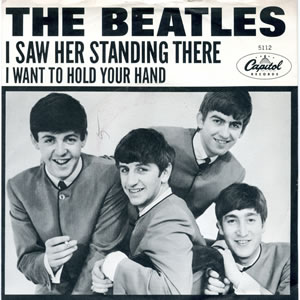 Ringo shows his versatility too by using brushes through the entire song and not straying off of the snare drum. One would think this was a professional drummer from a light jazz combo instead of the same rock-and-roll drummer we had just witnessed wailing away on “I Saw Her Standing There.” Once again, we see Ringo's cooperative focus on doing whatever it takes to make the song work. Ringo shows his versatility too by using brushes through the entire song and not straying off of the snare drum. One would think this was a professional drummer from a light jazz combo instead of the same rock-and-roll drummer we had just witnessed wailing away on “I Saw Her Standing There.” Once again, we see Ringo's cooperative focus on doing whatever it takes to make the song work.
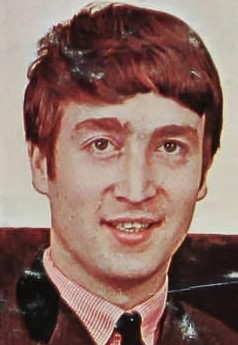 Lennon, on the other hand, can barely be noticed on rhythm guitar. Also, the bad cold John was suffering from on this day is probably most evident on this track as his vocal harmonies, as proficient as they were, suffers from stilted pronunciation. “A taste of huddy” is definitely the result of a stuffed-up nose. Lennon, on the other hand, can barely be noticed on rhythm guitar. Also, the bad cold John was suffering from on this day is probably most evident on this track as his vocal harmonies, as proficient as they were, suffers from stilted pronunciation. “A taste of huddy” is definitely the result of a stuffed-up nose.
 Vee-Jay's "Introducing The Beatles" album
|
American Releases
 The first American appearance of the song was with its album release on January 10th, 1964 on the Vee-Jay Records album “Introducing…The Beatles,” which remained in print until October 15th of that year. This mostly overlooked track received its biggest exposure from this release, being that it peaked at #2 on the Billboard album chart (just beneath Capitol's "Meet The Beatles!" at #1) and became a million-seller. The first American appearance of the song was with its album release on January 10th, 1964 on the Vee-Jay Records album “Introducing…The Beatles,” which remained in print until October 15th of that year. This mostly overlooked track received its biggest exposure from this release, being that it peaked at #2 on the Billboard album chart (just beneath Capitol's "Meet The Beatles!" at #1) and became a million-seller.
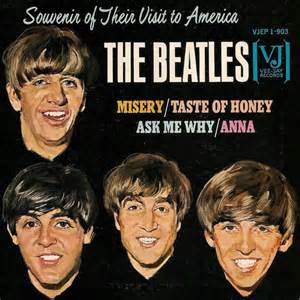 In order to cash in on the group's first American visit, along with their three Ed Sullivan Show appearances, Vee-Jay issued a four-song EP on March 23rd, 1964 they called “The Beatles – Souvenir of Their Visit To America.” “A Taste Of Honey” although not heard on these Ed Sullivan programs nor at any of their “Visit to America” performances, was included on the EP as the second song on side one. In order to cash in on the group's first American visit, along with their three Ed Sullivan Show appearances, Vee-Jay issued a four-song EP on March 23rd, 1964 they called “The Beatles – Souvenir of Their Visit To America.” “A Taste Of Honey” although not heard on these Ed Sullivan programs nor at any of their “Visit to America” performances, was included on the EP as the second song on side one.
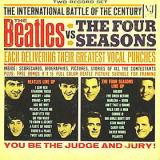 The next US appearance of the song came with the Vee-Jay double-album compilation “The Beatles vs. The Four Seasons,” released on October 1st, 1964, which paired the “Introducing…The Beatles” album with “The Golden Hits of the Four Seasons.” Less than two weeks later, Vee-Jay repackaged the same Beatles album under the name “Songs, Pictures And Stories Of The Fabulous Beatles,” this slbum being released on October 12th, 1964. The next US appearance of the song came with the Vee-Jay double-album compilation “The Beatles vs. The Four Seasons,” released on October 1st, 1964, which paired the “Introducing…The Beatles” album with “The Golden Hits of the Four Seasons.” Less than two weeks later, Vee-Jay repackaged the same Beatles album under the name “Songs, Pictures And Stories Of The Fabulous Beatles,” this slbum being released on October 12th, 1964.
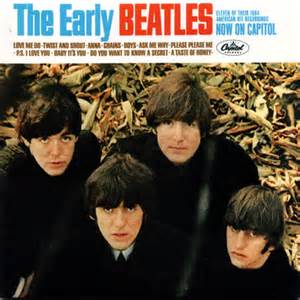 Capitol then took the ball and released the LP “The Early Beatles” on March 22nd, 1965 in order to make this song a part of the official Capitol catalog. Incidentally, mono copies of this album contained Capitol created "Type B" foldover mixes of these songs, which included "A Taste Of Honey," that combined both channels of the stereo mix into one, the legitimate mono mixes of these songs created by George Martin previously being featured on the above mentioned Vee-Jay releases. This album then appeared on an individual CD on January 21st, 2014, containing both the mono and stereo mixes on one disc. Capitol then took the ball and released the LP “The Early Beatles” on March 22nd, 1965 in order to make this song a part of the official Capitol catalog. Incidentally, mono copies of this album contained Capitol created "Type B" foldover mixes of these songs, which included "A Taste Of Honey," that combined both channels of the stereo mix into one, the legitimate mono mixes of these songs created by George Martin previously being featured on the above mentioned Vee-Jay releases. This album then appeared on an individual CD on January 21st, 2014, containing both the mono and stereo mixes on one disc.
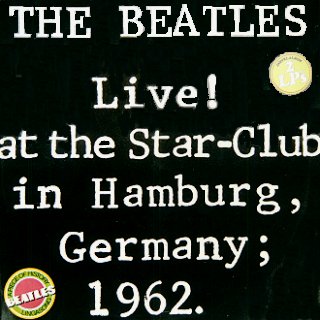 The next release of the song did not happen until 12 years later. Lingasong Records came out with the double album “Live! At the Star Club in Hamburg, Germany, 1962” on May 2nd, 1977. This extremely controversial new album set included an apparently edited version of their December 28th and December 31st, 1962 performances of the song on their final visit to Hamburg. This was the first and only record ever released on this short-lived label, which was a division of CBS Records. The controversy resulted from the band's performance being reproduced from a recording made on a crude portable Grundig home tape recorder by Kingsize Taylor of their rival band The Dominoes. Although $125,000 was invested by Lingasong to remix the recordings, the quality was bad enough to warrant Apple Records attempting to prevent its release, which it failed to do. The next release of the song did not happen until 12 years later. Lingasong Records came out with the double album “Live! At the Star Club in Hamburg, Germany, 1962” on May 2nd, 1977. This extremely controversial new album set included an apparently edited version of their December 28th and December 31st, 1962 performances of the song on their final visit to Hamburg. This was the first and only record ever released on this short-lived label, which was a division of CBS Records. The controversy resulted from the band's performance being reproduced from a recording made on a crude portable Grundig home tape recorder by Kingsize Taylor of their rival band The Dominoes. Although $125,000 was invested by Lingasong to remix the recordings, the quality was bad enough to warrant Apple Records attempting to prevent its release, which it failed to do.
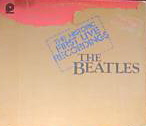 Shortly afterwards, Pickwick Records had acquired the rights to also release these live recordings, three single album volumes they called "Recorded Live In Hamburg 1962" being released sometime in 1978. Since many of the songs were included on more than one album, "A Taste Of Honey" appeared on both volumes one and three. In 1979, Pickwick thought it was smart to condense these live recordings into two volumes that did not repeat any of the tracks, “1st Live Recordings Vol. 1” including "A Taste Of Honey" as the second track on side one, the vocals having slightly more prominence than on the above detailed Lingasong album. Pickwick then paired together both volumes of their "1st Live Recordings" together into one double album entitled "The Historic First Live Recordings" in 1980. The small label Hall Of Music was next to release many of these Hamburg songs (including "A Taste Of Honey") on their double-album release "Live 1962, Hamburg Germany" in 1981. Shortly afterwards, Pickwick Records had acquired the rights to also release these live recordings, three single album volumes they called "Recorded Live In Hamburg 1962" being released sometime in 1978. Since many of the songs were included on more than one album, "A Taste Of Honey" appeared on both volumes one and three. In 1979, Pickwick thought it was smart to condense these live recordings into two volumes that did not repeat any of the tracks, “1st Live Recordings Vol. 1” including "A Taste Of Honey" as the second track on side one, the vocals having slightly more prominence than on the above detailed Lingasong album. Pickwick then paired together both volumes of their "1st Live Recordings" together into one double album entitled "The Historic First Live Recordings" in 1980. The small label Hall Of Music was next to release many of these Hamburg songs (including "A Taste Of Honey") on their double-album release "Live 1962, Hamburg Germany" in 1981.
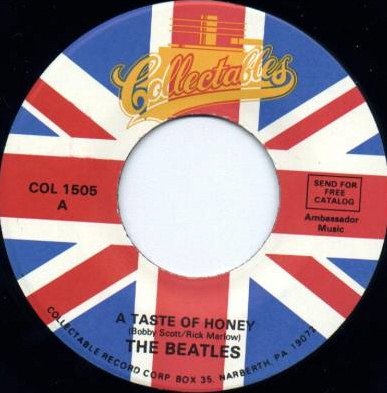 Collectables Records released their Hamburg version of "A Taste Of Honey" one further time, now as a single with their Hamburg recording of "Besame Mucho" on the b-side. This rare 1982 single is quite hard to find today. Collectables Records released their Hamburg version of "A Taste Of Honey" one further time, now as a single with their Hamburg recording of "Besame Mucho" on the b-side. This rare 1982 single is quite hard to find today.
The first time the original British "Please Please Me" album was made available in the US was the "Original Master Recording" vinyl edition released through Mobile Fidelity Sound Lab in January of 1987. This album included "A Taste Of Honey" and was prepared utilizing half-speed mastering technology from the original master tape on loan from EMI. This version of the British album was only available for a short time and is quite collectible today.
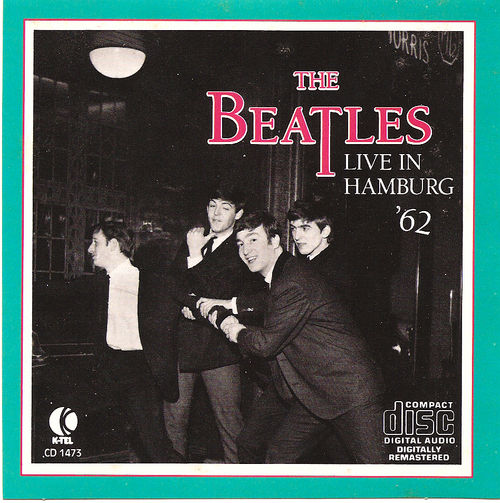 With the dawning of the compact disc era in the 1980's, music fans were eagerly waiting for the delayed release of the Beatles catalog on CD. K-Tel Records thought to cash in on everyone's expectation by releasing "Live In Hamburg '62" in early February 1987, which was just prior to the release of the first four Beatles albums by Apple. Many Beatles fans couldn't resist owning a live CD by their favorite band featuring 20 songs including "A Taste Of Honey," not realizing that this was a very lo-fi rough recording that was released many times before on vinyl, as detailed above. With the dawning of the compact disc era in the 1980's, music fans were eagerly waiting for the delayed release of the Beatles catalog on CD. K-Tel Records thought to cash in on everyone's expectation by releasing "Live In Hamburg '62" in early February 1987, which was just prior to the release of the first four Beatles albums by Apple. Many Beatles fans couldn't resist owning a live CD by their favorite band featuring 20 songs including "A Taste Of Honey," not realizing that this was a very lo-fi rough recording that was released many times before on vinyl, as detailed above.
The song's next release was on February 26th, 1987 on the first official Beatles compact disc, this being the original British "Please Please Me" album, a vinyl release coming out on July 21st, 1987. While this release was in mono only, a remastered stereo version came out on CD on September 9th, 2009 and on vinyl on November 13th, 2012.
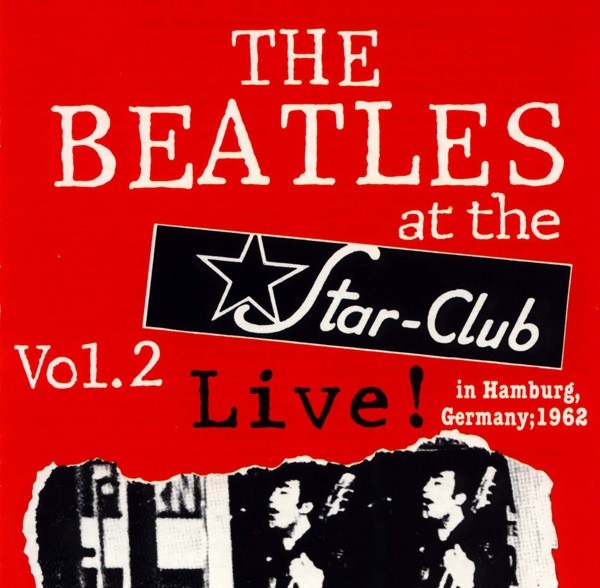 Sometime during 1991, Sony Music came out with two volumes of their 1962 Hamburg recordings as detailed above, "A Taste Of Honey" being featured on "Live! At The Star Club In Hamburg, Germany; 1962 (Vol. 2)." The release of these volumes prompted legal action from The Beatles on this occasion, Sony discontinuing production of these volumes because of the lawsuit that had been filed. By 1998, The Beatles had won the right of ownership for these recordings, any further releases surfacing after this point being illegally produced bootlegs. Sometime during 1991, Sony Music came out with two volumes of their 1962 Hamburg recordings as detailed above, "A Taste Of Honey" being featured on "Live! At The Star Club In Hamburg, Germany; 1962 (Vol. 2)." The release of these volumes prompted legal action from The Beatles on this occasion, Sony discontinuing production of these volumes because of the lawsuit that had been filed. By 1998, The Beatles had won the right of ownership for these recordings, any further releases surfacing after this point being illegally produced bootlegs.
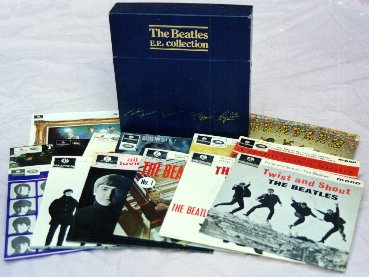 On June 30th, 1992, Capitol released the box set “Compact Disc EP Collection,” which includes the full 1963 British EP “Twist And Shout.” The original mono version of “A Taste Of Honey” is included therein. On June 30th, 1992, Capitol released the box set “Compact Disc EP Collection,” which includes the full 1963 British EP “Twist And Shout.” The original mono version of “A Taste Of Honey” is included therein.
The next released version of the song appeared on the album “Live At The BBC,” released on December 6th, 1994. This alternate rendition of the song was recorded on July10th, 1963 for their “Pop Go The Beatles” BBC radio show which aired on July 23rd of that year. A remastered and re-packaged version of this album was released on November 11th, 2013.
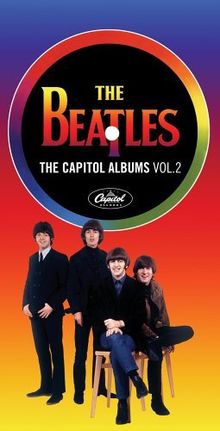 Then came the box set “The Captol Albums, Vol. 2” on April 11th, 2006, which contained the original 1965 "Early Beatles" LP, this including "A Taste Of Honey," in stereo and "Type B" foldover mono. Then came the box set “The Captol Albums, Vol. 2” on April 11th, 2006, which contained the original 1965 "Early Beatles" LP, this including "A Taste Of Honey," in stereo and "Type B" foldover mono.
September 9th, 2009 was the date of the US release of the song on the compact disc box set “The Beatles In Mono.” A vibrant remastered version of the mono mix of “A Taste Of Honey” is included here, the vinyl edition of this new box set being first released on September 9th, 2014.
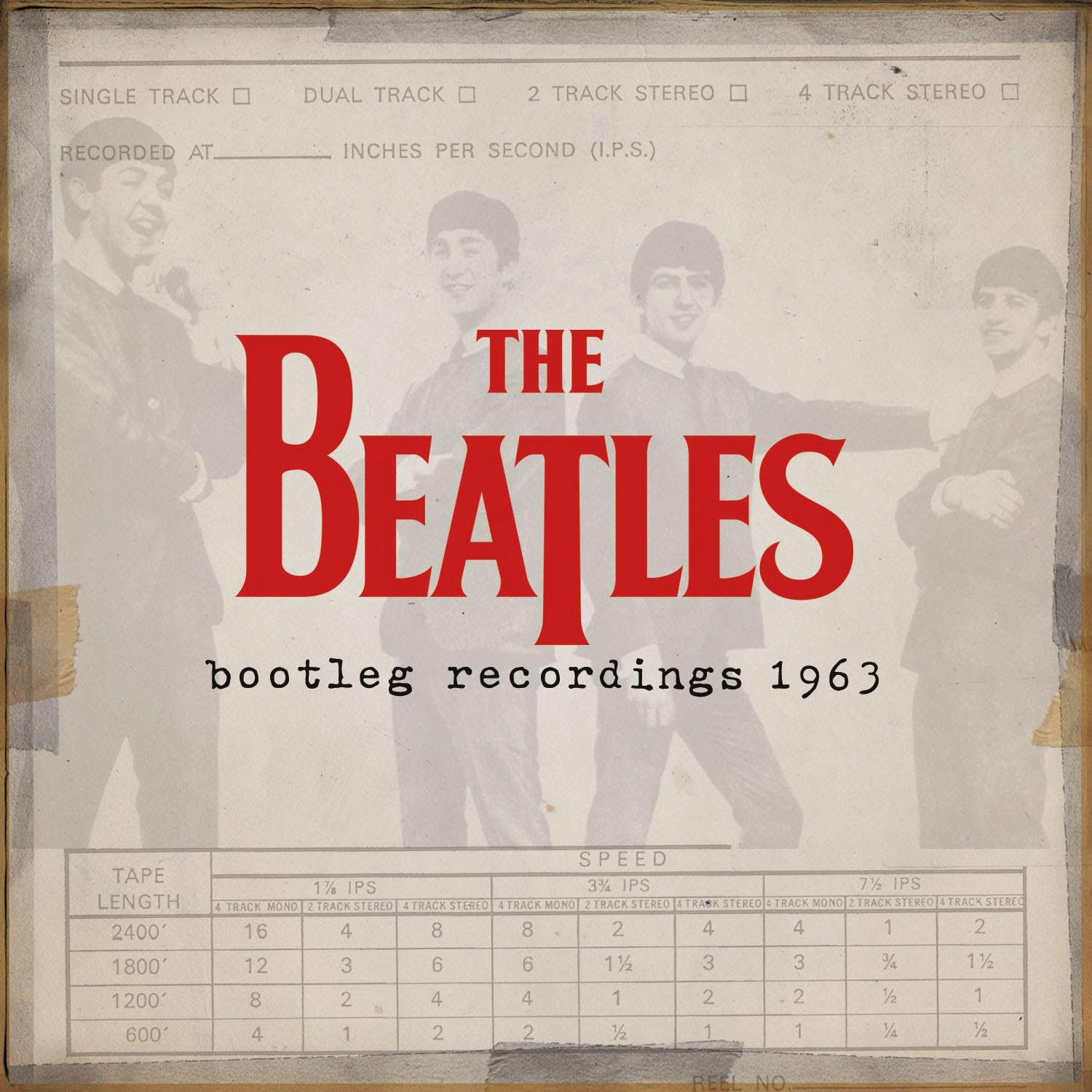 On December 17th, 2013, iTunes released a 59 track compilation album entitled "Bootleg Recordings 1963" only available on their downloading platform. "Take six" of "A Taste Of Honey," as recorded at the February 11th, 1963 EMI session, was included on this album, along with four BBC radio performances of the song they recorded in 1963: June 23rd for the "Easy Beat" program, June 18th for "Pop Goes The Beatles," September 10th for another "Pop Goes The Beatles," and May 13th for "Side By Side." The purpose of this release was to extend the copyright of these recordings under European Union law from 50 years (which would have expired at the end of 2013) to 70 years (until 2033), this being considered as an official release. This compilation album was only available in the US on that date to those in the know for a number of hours for $39.99 in its entirety or to be purchased as individual tracks, but was later made available for purchase as well. On December 17th, 2013, iTunes released a 59 track compilation album entitled "Bootleg Recordings 1963" only available on their downloading platform. "Take six" of "A Taste Of Honey," as recorded at the February 11th, 1963 EMI session, was included on this album, along with four BBC radio performances of the song they recorded in 1963: June 23rd for the "Easy Beat" program, June 18th for "Pop Goes The Beatles," September 10th for another "Pop Goes The Beatles," and May 13th for "Side By Side." The purpose of this release was to extend the copyright of these recordings under European Union law from 50 years (which would have expired at the end of 2013) to 70 years (until 2033), this being considered as an official release. This compilation album was only available in the US on that date to those in the know for a number of hours for $39.99 in its entirety or to be purchased as individual tracks, but was later made available for purchase as well.
Live Performances
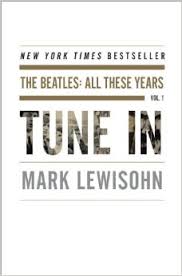 The first evidence of The Beatles performing this song was in October of 1962, one month after the rendition by Lenny Welch was released. As Mark Lewisohn outlines in his book "Tune In," there was a degree of uncertainty as to whether The Beatles should perform "A Taste Of Honey" at all. Paul got aquainted with it in October of 1962 and immediately wanted to include it in the group's set list, taking lead vocals himself. John didn't think it was the type of song they should be doing. The first evidence of The Beatles performing this song was in October of 1962, one month after the rendition by Lenny Welch was released. As Mark Lewisohn outlines in his book "Tune In," there was a degree of uncertainty as to whether The Beatles should perform "A Taste Of Honey" at all. Paul got aquainted with it in October of 1962 and immediately wanted to include it in the group's set list, taking lead vocals himself. John didn't think it was the type of song they should be doing.
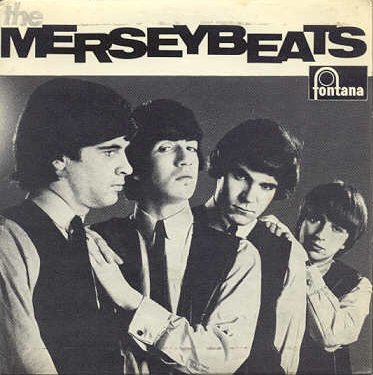 Mark Lewisohn explained it this way: "It would become a sustained point of contention between them, but they decided to put it to the test, to play it to audiences and watch the reaction...One of the first times The Beatles played it was at the Rialto Ballroom on October 11 (1962)." The group The Mersey Beats also performed at that show and, a few nights later, McCartney cornered their bass player Billy Kinsley for his opinion. Billy Kinsley related: "Paul came up to me and said, 'What did you think of that song we did the other night, 'A Taste Of Honey?' and I said, 'I was knocked out by it. Superb.' Paul grabbed hold of me and said, 'Go and tell the others that.' He took me into their dressing-room and John said, 'Go on then, what do you think?' I was fifteen and very nervous because there was Big John Lennon asking me what I thought of a song he didn't like. Paul said, 'Come on, just tell the truth.' I told him that I thought 'A Taste Of Honey' was great. Paul said, 'Ha-ha, there you go!'" Mark Lewisohn explained it this way: "It would become a sustained point of contention between them, but they decided to put it to the test, to play it to audiences and watch the reaction...One of the first times The Beatles played it was at the Rialto Ballroom on October 11 (1962)." The group The Mersey Beats also performed at that show and, a few nights later, McCartney cornered their bass player Billy Kinsley for his opinion. Billy Kinsley related: "Paul came up to me and said, 'What did you think of that song we did the other night, 'A Taste Of Honey?' and I said, 'I was knocked out by it. Superb.' Paul grabbed hold of me and said, 'Go and tell the others that.' He took me into their dressing-room and John said, 'Go on then, what do you think?' I was fifteen and very nervous because there was Big John Lennon asking me what I thought of a song he didn't like. Paul said, 'Come on, just tell the truth.' I told him that I thought 'A Taste Of Honey' was great. Paul said, 'Ha-ha, there you go!'"
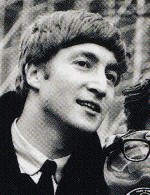 The Beatles then had a television appearance on October 29th, 1962, on the British program “People And Places” performing "A Taste Of Honey." They did a very proficient send-up of the song whenever they performed it in concert, and Lennon was known to put in little jabs of protest during their performances by sometimes singing "A Waste Of Money" when his backing vocals were required. Paul would also incorporate an unusual inflection in his voice when singing the line "sweeter than wine," pronouncing it as "schweeter than wine." The Beatles then had a television appearance on October 29th, 1962, on the British program “People And Places” performing "A Taste Of Honey." They did a very proficient send-up of the song whenever they performed it in concert, and Lennon was known to put in little jabs of protest during their performances by sometimes singing "A Waste Of Money" when his backing vocals were required. Paul would also incorporate an unusual inflection in his voice when singing the line "sweeter than wine," pronouncing it as "schweeter than wine."
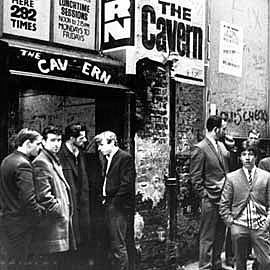 They continued to perform "A Taste Of Honey" during their residencies in Hamburg and then at The Cavern Club in Liverpool right on into 1963. "'A Taste Of Honey' was one of my big numbers in Hamburg, a bit of a ballad," stated Paul in the book "Beatles Anthology." "It was different, but it used to get requested a lot. We sang close harmonies on the little echo mikes, and we made afairly good job of it. It used to sound pretty good, actually." Two partial crude recordings of the song were made during their last trip to Hamburg in December 1962, which appear on the album “Live! At the Star Club in Hamburg, Germany, 1962,” which was eventually released in 1977. The day after the song was recorded on February 11th, 1963 for their first album, the group performed it at a concert in Sheffield, Yorkshire, at the Azena Ballroom, February 12th, 1963. They continued to perform "A Taste Of Honey" during their residencies in Hamburg and then at The Cavern Club in Liverpool right on into 1963. "'A Taste Of Honey' was one of my big numbers in Hamburg, a bit of a ballad," stated Paul in the book "Beatles Anthology." "It was different, but it used to get requested a lot. We sang close harmonies on the little echo mikes, and we made afairly good job of it. It used to sound pretty good, actually." Two partial crude recordings of the song were made during their last trip to Hamburg in December 1962, which appear on the album “Live! At the Star Club in Hamburg, Germany, 1962,” which was eventually released in 1977. The day after the song was recorded on February 11th, 1963 for their first album, the group performed it at a concert in Sheffield, Yorkshire, at the Azena Ballroom, February 12th, 1963.
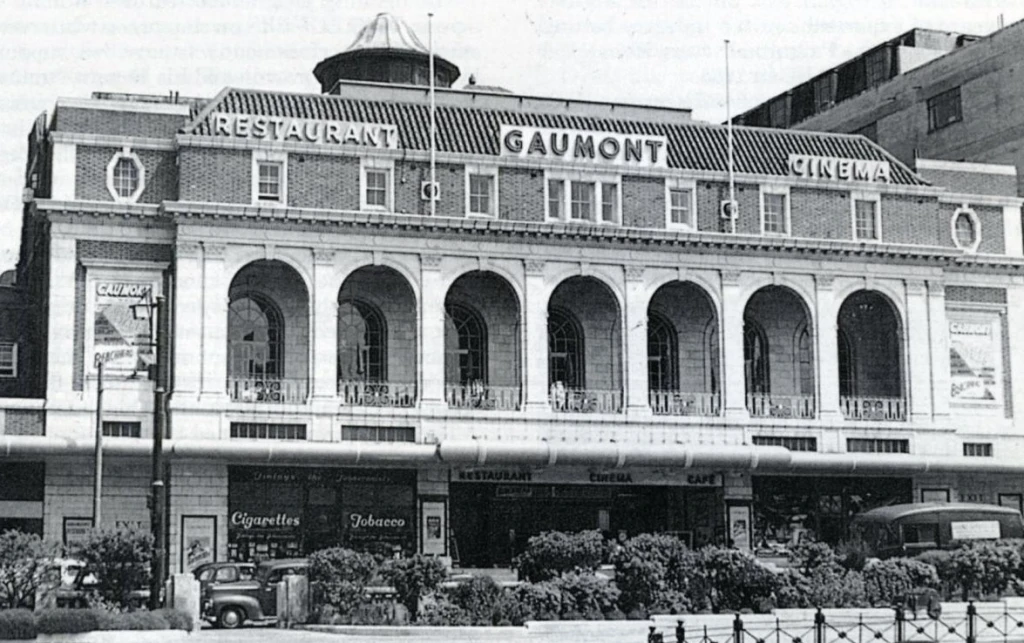 They continued to perform the song throughout 1963, as evidenced by its inclusion in their week-long July performances at the Winter Gardens at Margate, Kent, their six night residency at the Gaumont Cinema in Bournemouth, Hants from August 19th through 24th, and their October 29th concert in Eskilstuna, Sweden. The Beatles were to replace this concert staple with another "adult" sounding crooner, “Till There Was You” by the time it was released on their “With The Beatles” British album in November 1963. They continued to perform the song throughout 1963, as evidenced by its inclusion in their week-long July performances at the Winter Gardens at Margate, Kent, their six night residency at the Gaumont Cinema in Bournemouth, Hants from August 19th through 24th, and their October 29th concert in Eskilstuna, Sweden. The Beatles were to replace this concert staple with another "adult" sounding crooner, “Till There Was You” by the time it was released on their “With The Beatles” British album in November 1963.
Conclusion
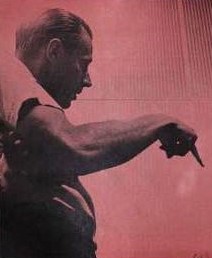 Many years later, it might appear a bit laughable and/or embarrassing to hear “A Taste Of Honey” among rock-n-roll classics that dominate the first Beatles LP. "Why," some may inquire, "would the greatest rock band in the world cop-out and perform a "wimpy" ballad like this?" Many years later, it might appear a bit laughable and/or embarrassing to hear “A Taste Of Honey” among rock-n-roll classics that dominate the first Beatles LP. "Why," some may inquire, "would the greatest rock band in the world cop-out and perform a "wimpy" ballad like this?"
The answer is, simply to show off their versatility. Both George Martin and Brian Epstein were encouraging The Beatles to record material like this. McCartney also had affection for these kinds of songs. It was therefore a quite easy and comfortable decision to include "A Taste Of Honey" on their first album.
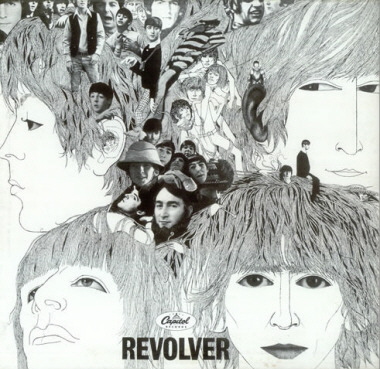 One thing that truly can be stated is that The Beatles' versatility was shown on each and every album they released. You can’t help but note the variety of styles on LPs such as “Revolver,” “Sgt. Pepper” and the “White Album.” The same release that offered us the ultra-heavy “Helter Skelter” also presented us with “Blackbird” and “Honey Pie.” The same release that gave us the symphonic masterpiece “A Day In The Life” also delivered us “When I’m Sixty-Four” and “Within You Without You.” So why wouldn’t their first album, which made us dance to “Twist And Shout” and “I Saw Her Standing There,” give us “A Taste Of Honey”? One thing that truly can be stated is that The Beatles' versatility was shown on each and every album they released. You can’t help but note the variety of styles on LPs such as “Revolver,” “Sgt. Pepper” and the “White Album.” The same release that offered us the ultra-heavy “Helter Skelter” also presented us with “Blackbird” and “Honey Pie.” The same release that gave us the symphonic masterpiece “A Day In The Life” also delivered us “When I’m Sixty-Four” and “Within You Without You.” So why wouldn’t their first album, which made us dance to “Twist And Shout” and “I Saw Her Standing There,” give us “A Taste Of Honey”?
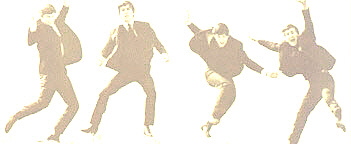 Truth be told, The Beatles took a classic piece of brilliantly written balladry and transformed it into a prototypical Beatles arrangement with great aplomb. In the process, it exposed another genre of music to the youth of that time and also to future generations of Beatlemaniacs to come. If you've learned to love it, or are determined to loathe it, either way it must be admitted that only The Beatles could have pulled off something like this. Truth be told, The Beatles took a classic piece of brilliantly written balladry and transformed it into a prototypical Beatles arrangement with great aplomb. In the process, it exposed another genre of music to the youth of that time and also to future generations of Beatlemaniacs to come. If you've learned to love it, or are determined to loathe it, either way it must be admitted that only The Beatles could have pulled off something like this.
Song Summary
“A Taste Of Honey”
Written by: Ric Marlow / Bobby Scott
- Song Written: 1960
- Song Recorded: February 11, 1963
- First US Release Date: January 6, 1964
- First US Album Release: Vee Jay #VJLP 1062 “Introducing…The Beatles”
- US Single Release: Vee Jay #VJEP 1-903 (“Souvenir of Their Visit To America”)
- Highest Chart Position: n/a
- British Album Release: Parlophone #PCS3042 “Please Please Me”
- Length: 2:01
- Key: F# minor
- Producer: George Martin
- Engineers: Norman Smith, Richard Langham
Instrumentation (most likely):
- Paul McCartney - Lead Vocals, Bass Guitar (1961 Hofner 500/1)
- George Harrison – Lead Guitar (1957 Gretsch Duo Jet), Background Vocals
- John Lennon - Rhythm Guitar (1958 Rickenbacker 325), Background Vocals
- Ringo Starr – Drums (1960 Premier 58/54 Mahogany)
Written and compiled by Dave Rybaczewski
|
IF YOU WOULD LIKE TO MAKE A DONATION TO KEEP THIS WEBSITE UP AND RUNNING, PLEASE CLICK BELOW!
Sign Up Below for our MONTHLY BEATLES TRIVIA QUIZ!
|